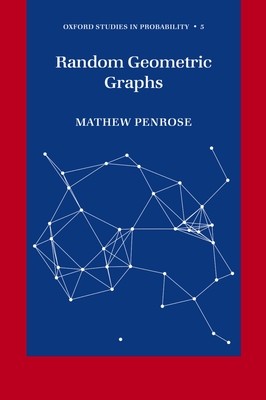
- We will send in 10–14 business days.
- Author: Mathew Penrose
- Publisher: OUP Oxford
- ISBN-10: 0198506260
- ISBN-13: 9780198506263
- Format: 15.9 x 23.9 x 2.7 cm, kieti viršeliai
- Language: English
- SAVE -10% with code: EXTRA
Reviews
Description
This monograph provides and explains the mathematics behind geometric graph theory, which studies the properties of a graph that consists of nodes placed in Euclidean space so that edges can be added to connect points that are close to one another. For example, a collection of trees scattered in a forest and the disease that is passed between them, a set of nests of animals or birds on a region and the communication between them or communication between communications stations or nerve cells. Aimed at graduate students and researchers in probability, statistics, combinatorics and graph theory including computer scientists, it covers topics such as: technical tools, edge and component counts, vertex degrees, clique and chromatic number, and connectivity. Applications of this theory are used in the study of neural networks, spread of disease, astrophysics and spatial statistics.
EXTRA 10 % discount with code: EXTRA
The promotion ends in 22d.00:40:56
The discount code is valid when purchasing from 10 €. Discounts do not stack.
- Author: Mathew Penrose
- Publisher: OUP Oxford
- ISBN-10: 0198506260
- ISBN-13: 9780198506263
- Format: 15.9 x 23.9 x 2.7 cm, kieti viršeliai
- Language: English English
This monograph provides and explains the mathematics behind geometric graph theory, which studies the properties of a graph that consists of nodes placed in Euclidean space so that edges can be added to connect points that are close to one another. For example, a collection of trees scattered in a forest and the disease that is passed between them, a set of nests of animals or birds on a region and the communication between them or communication between communications stations or nerve cells. Aimed at graduate students and researchers in probability, statistics, combinatorics and graph theory including computer scientists, it covers topics such as: technical tools, edge and component counts, vertex degrees, clique and chromatic number, and connectivity. Applications of this theory are used in the study of neural networks, spread of disease, astrophysics and spatial statistics.


Reviews